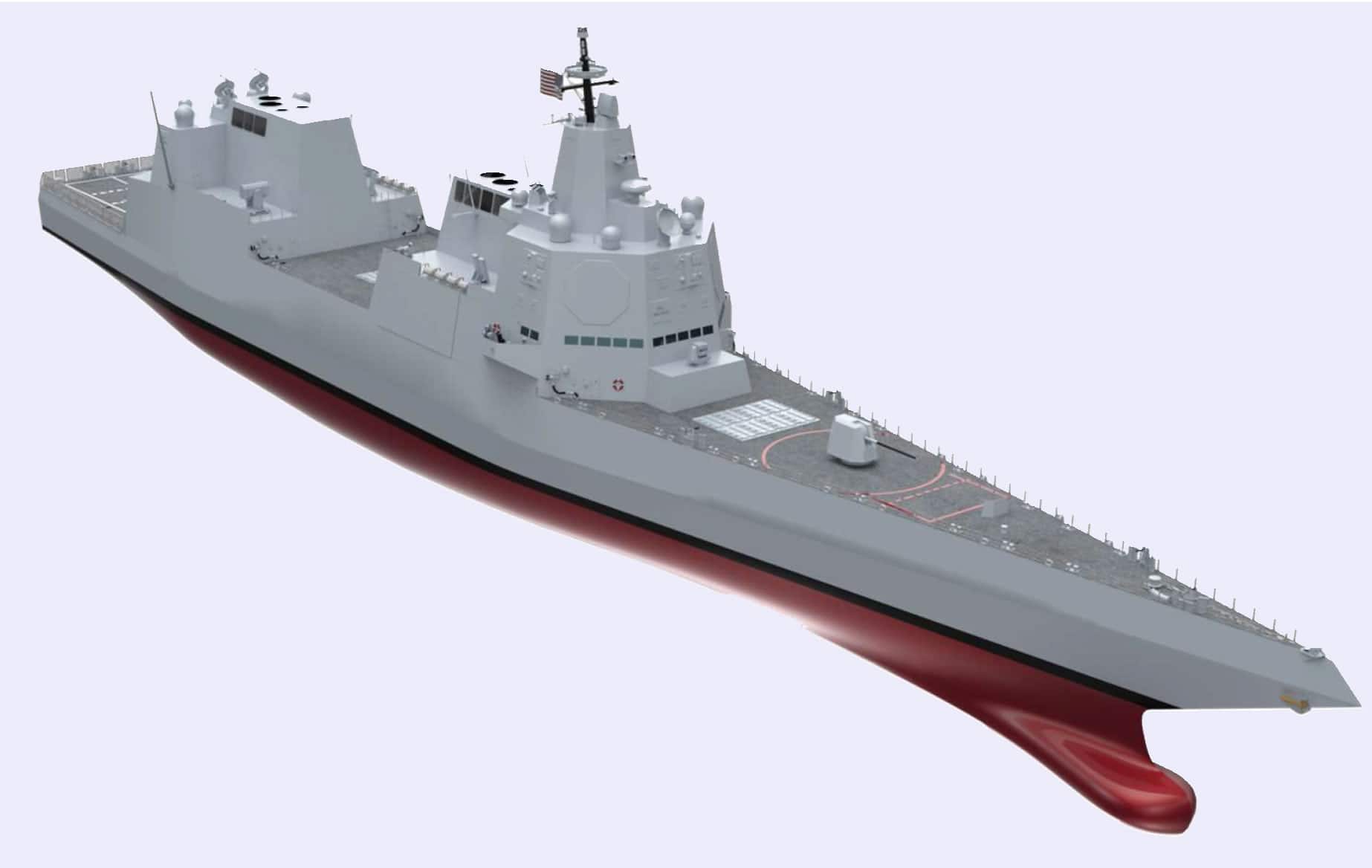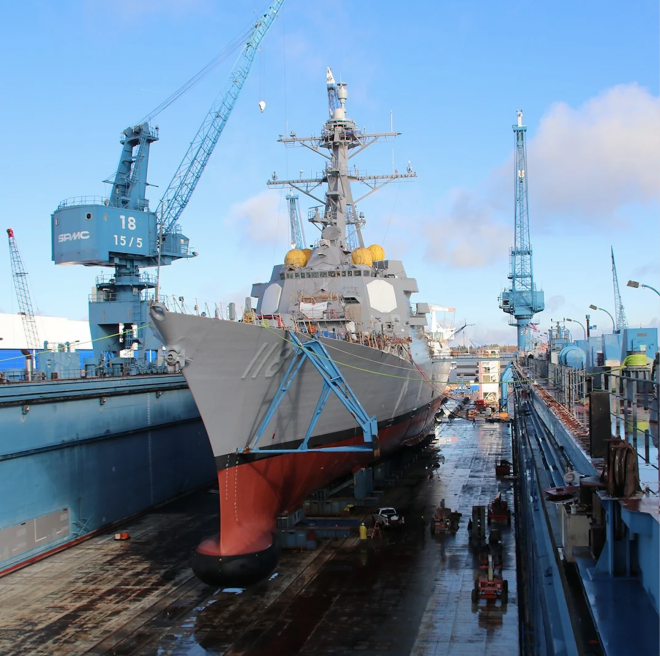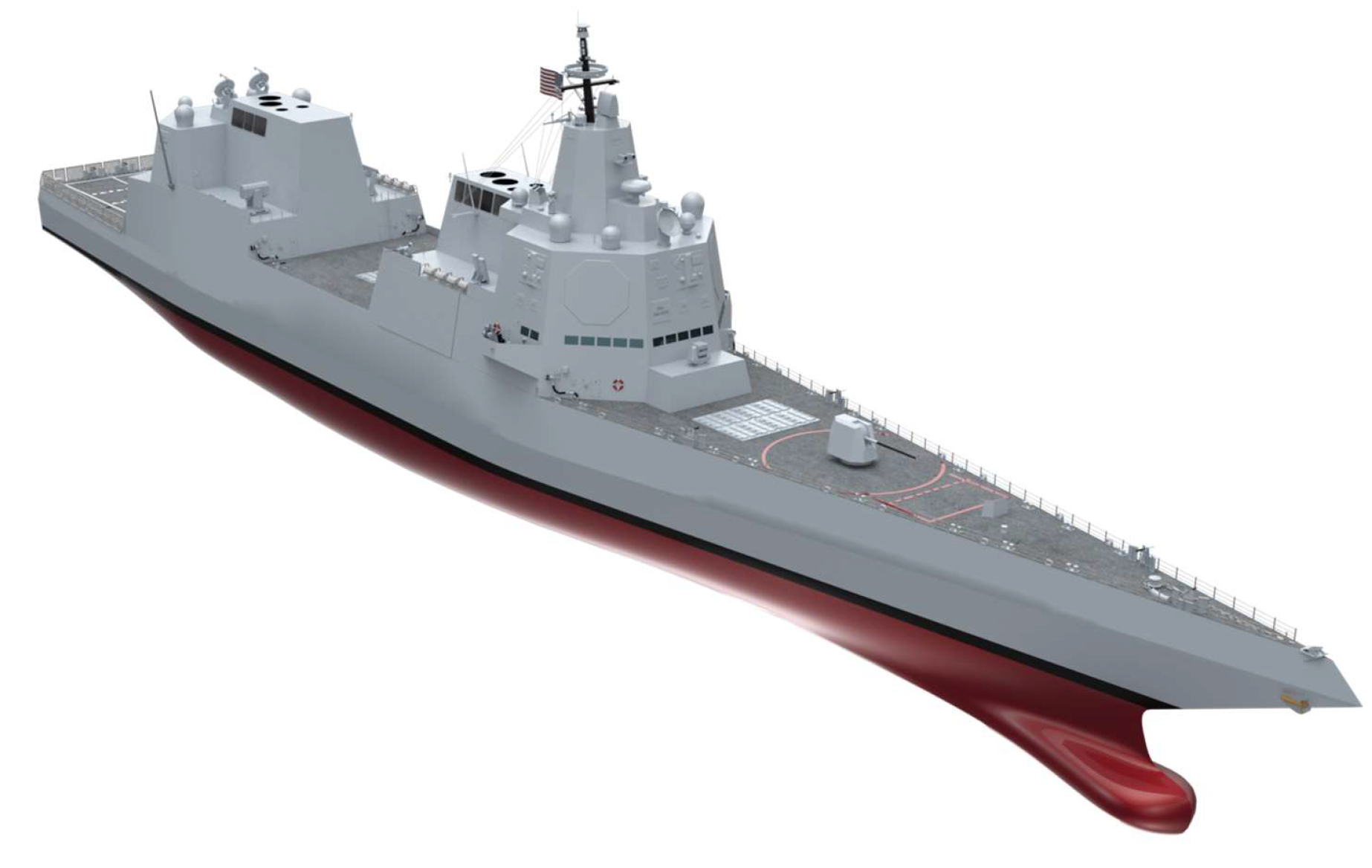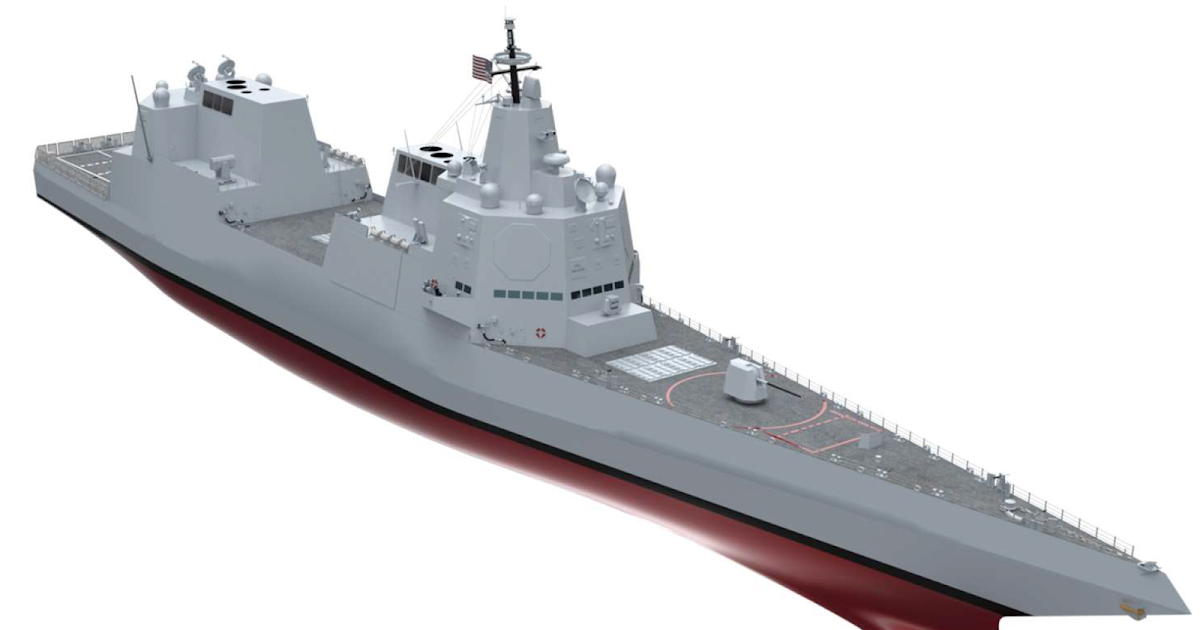Hmm, I wonder if I inadvertently had something to do with it.No wonder USNI shut down the comments section on this farce.
I was overly excited and linked the article on 4chan (regrettably). Comments section was shut down a few minutes later.
Hmm, I wonder if I inadvertently had something to do with it.No wonder USNI shut down the comments section on this farce.
IIRC the main problem was a crew too small for the maintenance load. At least the LCS will have the spaciousness to make maintenance tasks easier.As for the DPM sounds like they didn't learn their lesson with LCS.
The problem with LCS isn't really modularity, it's being able to train crews to rapidly swap between widely disparate missions and equipment.
Certainly the LSC graphic would indicate it takes up the same area behind the forward superstructure. From a design and program perspective it would be faster, and more likely to receive funding if the DPM was accommodated in the original design through reserved space, as opposed to needing a new flight LSC to carry it.I'm not sure if "Destroyer Payload Module" implies something like the Northrop Grumman Modular Launch System, where they can add larger cells in lieu of the smaller ones, or if they mean hull-plugs containing more VLS modules like the Virginia Block Vs.
That's certainly the conventional wisdom. However, the words "Payload Module" immediately bring to mind the Virginia Payload Module, which is a hull insert/extension containing additional tubes. It's possible that's deliberate, and the program is considering a similar arrangement for the new combatant. If designed to accommodate such an insert from the beginning, costs and complexity can be managed. The 774 Block Vs, for instance, can and will be built with or without VPM.Certainly the LSC graphic would indicate it takes up the same area behind the forward superstructure. From a design and program perspective it would be faster, and more likely to receive funding if the DPM was accommodated in the original design through reserved space, as opposed to needing a new flight LSC to carry it.I'm not sure if "Destroyer Payload Module" implies something like the Northrop Grumman Modular Launch System, where they can add larger cells in lieu of the smaller ones, or if they mean hull-plugs containing more VLS modules like the Virginia Block Vs.
The integration, industrial capacity expansion etc contract for CPS and Zumwalt was awarded to LM back in November. There are still 3 years to go before this thing hits the water with the capability, so more contracts in the FY-22 and FY-23 budgets can be expected to support that IOC date for the capability.Considering how both the SM-3 Block IIA and SM-6 Block 1B both required designing a new lightweight canister just to make it work in the Mk 41, and have wanted even larger Standard variants since the 90s, I don't see how asking for a larger cell is unreasonable. You cannot design larger missiles if you don't have something to launch it
I'll believe it when I see it. Right now have they even cut parts on either the missile or the launcher?The Navy designed a larger missile than what the Mk41 could accomodate (IR-CPS) and plans to launch it from both the Zumwalt class and DDG(X) it seems.You cannot design larger missiles if you don't have something to launch it from.

“That is what DDG(X) plans to do—we are going to execute an evolutionary [versus] revolutionary technology incorporation process. So the DDG(X), the first ship, will focus on a new hull form and a new Integrated Power System. We will use the proven combat system from the [DDG 51] Flight Three ship so we are designing the [DDG(X)] ship with the flexibility and the margins to accommodate the future of the Navy, and the needs, and where we’re going.”
Kate Connelly, the Deputy Program Manager for the DDG(X)
During the DDG(X) session’s Question and Answer with the Media, the DDG(X) Program Office admitted that the new hull form has not been finalized and is just a concept, meaning no decision has been made on if it will be a tumblehome hull (just like the Zumwalt-class destroyers) or a flared monohull. The graphical image is just a notional conceptual design.



Gibbs and Cox to support U.S. Navy's future DDG(X) design - Naval News
Gibbs & Cox Inc. is awarded a $29,5 million contract for supporting ship design and engineering efforts for the U.S. Navy's future DDG(X).www.navalnews.com

Well they are right.
Navy offers a new argument for decommissioning cruisers: They’re not safe.
Congress hasn't been swayed to let the Navy decommission its cruisers early after money- and readiness-focused arguments. Now, the Navy is saying those old ships aren't safe.www.defensenews.com



DDG(X) Becoming a CG(X) Flashback?
Navalists should be forgiven if they have, on occasion, the mindset and habits of an abused partner. Slightly flenching with memory, but al...cdrsalamander.blogspot.com



The Navy’s continuing cruiser debacle
A lengthy and costly effort to modernize the aging cruisers has not gone as planned, the Navy admits.www.navytimes.com
How do you figure? The last ship was only christened 4 years ago and the hull was supposed to form the basis of the Tico replacement.Shades of Lehman trying to reactivate the Oriskany to get the fleet to 600 ships, regardless if they were effective combatants or not.
Slow your horses. He was referring to the cruiser modernisation program for the clapped out CG-47s, not the DDG-1000s.How do you figure? Seriously. The last ship was only christened 4 years ago and the hull was supposed to form the basis of the Tico replacement. Can't tell if you're trolling or just stupid.
Not responding to you about the Zumwalt, I think using a hull derived from them would be a good base a new Large Surface Combatant design, I'm referring to the attempt to life-extend the Ticonderoga-class.How do you figure? Seriously. The last ship was only christened 4 years ago and the hull was supposed to form the basis of the Tico replacement. Can't tell if you're trolling or just stupid.
If only there were an existing hull, perfect for the job.
In either case, you need physically large ships to keep the radars relatively stable. Look at how big the Constellation class has turned out to be to be able to support the radars!If it were any good they would have fully documented it as they claimed they would. That was three years ago.
From the MAMDJF AOA that was done for the most stressing ballistic missile and ASCM
environment for the 2024 - 2030 period, a SPY + 30dB or greater radar is a requirement.
You can either get that from a monostatic arrangement which requires a very large array
which will largely dictate a good deal of the configuration of the ship.
Or
You pursue a distributed radar approach where, to grossly simplify, a group of
networked surface combatants coordinate their pulse transmissions such that the
pulses combine constructively at the target.
Either you pay for the former (it can be reasonably bounded since the technologies are mature)
or you risk the latter.
All USN major combatants are build to keep up with the carriers. 25-30 knots.Does it much matter that the Zumwalt can sprint 10knts faster if it has to be tied to a train of slower support ships? Does a lower RCS matter as much operationally if it is escorted by or escorting ships with higher signatures?
A Trident missile tube is right at 44 feet long and has a 4ft tall hemispherical hatch on the end, total of about 48ft. A Virginia class hull is only 34ft in diameter, so the section of hull with a Trident tube would have a raised turtledeck about 16ft above the hull cylinder. Then you can only stick those big tubes on the centerline of the hull because there's physically not enough space, so instead of having 16 per ship in a reasonable length you have 8 birds per ship. And that doubles the number of "Virginia SSBNs" you need to ensure coverage. 2x $3bn > 1x $4bn.Frankly, I never understood the role of Columbia-class. Why not just build a ballistic-capable variant of "Virginia"? Yes, it may lose a bit in capabilities, but it would be an order of magnitude cheaper, and gave a great commonality in maintenance and crew training.
I don't believe there's been any serious discussion of making nuclear Tomahawks again.I would think that by the time Virginia is modified that the costs and requirements basically lead it to become close enough to a Columbia that the Columbia makes more sense. Are we not arming Virginia now with nuclear tipped tomahawks or isn't there talk about that?
That's the Japanese ships, Kongo-Maya-Atago classes. And IIRC the Korean ships as well.As far as i know, Tico have only one additional feature, besides the deeper magazine, that is supporting the Air Warfare Commander and having space and systems to support his staff (Aegis CIC). Can't that be replicated in an enlarged AB class?
Apologies.Not responding to you about the Zumwalt, I think using a hull derived from them would be a good base a new Large Surface Combatant design, I'm referring to the attempt to life-extend the Ticonderoga-class.
Japan has a first world class shipbuilding industry (third in world building commercial ships, US position maybe 100th?)
America will not re-industrialize without a massive shift in our domestic political culture. Our self-image of middle class success is The Office, not the hard work of manual labor bending steel.I think your answered your own question there. American shipyards have been envious of Japanese ones since the mid-80's.
There's no rapid shipbuilding in America left. Not enough workers in the labor pool, not enough worker protections or unions to entice people to leave other industries, and honestly not enough emphasis on trades education to really focus people to those jobs, anyway.
It's not like the present PRC, or 1920's America, where you can just draw on a large pool of surplus agrarian workers being drawn to the cities.
How a more technologically advanced country with a smaller population, but better trained military, can defeat a much bigger, more industrious country, with a larger manpower pool, and greater tangible economic potentials, is the question of the era. History suggests avoiding a war to begin with is a good place to start.
America will not re-industrialize without a massive shift in our domestic political culture. Our self-image of middle class success is The Office, not the hard work of manual labor bending steel.
The recent wave of re-industrialization is already causing a backlash, as people bitch and moan that fast food workers (a job I have held, and is harder than aerospaceengineeringemailing) are getting paid too much.
Maybe add Japan and S. Korea to AUKUS - JAAUKUSKOR (pn: JAW CUSS CORE) and create a true global defense/weapons manufacturing behemoth.
The Navy began the detailed design work on the upgraded Burke DDG-51 Flight III design in FY2013. The first Flight III hull DDG-125 / USS Jack H Lucas construction began in May 2018 and has just been commissioned October 7, 2023, five years and four months in build to commissioning.USN DDG-125 was laid down in November of 19, she was in the water in June of 21. 17 months. JMSDF DDG-179 was laid down April of 17 and was in the water August of 18. 16 months. Both are the first hull of a major new variant of an existing surface combatant class. Oh and the USN hull was built during a global pandemic.
Japan has built 8 very nice Aegis destroyers since 1990. The United States has built Seventy Two in the same period.
I have to idea when detailed design on the 27DDGs started, only that it was somewhere in the 10-year gap between Aegis destroyers classes. Pre-build detailed design for Flight III ran FY13-15, the first two hulls were purchased in FY16. The gap from purchase to build occurs because they were bought as part of a multi-year block buy, with transitional Flight IIA hulls coming before Flight III construction could begin.The Navy began the detailed design work on the upgraded Burke DDG-51 Flight III design in FY2013. The first Flight III hull DDG-125 / USS Jack H Lucas construction began in May 2018 and has just been commissioned October 7, 2023, five years and four months in build to commissioning.
Aye, and if my grandmother had wheels she'd be a wagon.Overall it has taken ten years from start of detailed design to commissioning for the new Flight III whereas the Japanese plan for the 128 VLS ASEV, a totally new ship, detailed design to commissioning, April 2023 and March 2028 respectively, only five years, the current plan for the DDG(X) detailed design to commissioning looking something more like fifteen to seventeen years.
My point in regards to the 27DDGs' launch-to-commission time was an attempt to temper expectations about ASEV. It's really easy in 2023 to make a press release or budget bullet point saying it will launch in 2028 and be in service in 29, but we have no idea if they're actually going to hit those dates. They've set a very aggressive schedule and it will be interesting to see if they hit it, but setting that schedule does not make it a done deal. Damning US shipbuilders by using Japan's very optimistic plan is a bit silly. The most recent new large combatants both countries have built, and can point to as data rather than hopes and dreams, do not support the idea that American ship builders are incapable.@ Moose, your point 27 DDGs took about 21 months each from launch to commission would seem to give a misleading impression of Burke build times, reading the USNI article "Arleigh Burke Guided-Missile Destroyer Program Marks Key Milestones" by Sam LaGrone, construction of the future USS Jack H. Lucas (DDG 125) the first Flight III officially began on May 17, 2018 at Ingalls and has just been commissioned after 5 years and 4 months and it also mentioned construction of the USS Harvey C. Barnum Jr. (DDG 124) began May 17, 2018 at BIW, one of the last of the Flight IIA ships, commissioning expected in 2024, so expect near 6 years in build.
I do not disagree with Megan's DDG(X) statement, it in fact reinforces the point I was making in defense of US shipbuilding.The current state of the new combatant program is a result of political, strategy and leadership deficiencies not welders or electricians. Saddle MHI with our leadership and they would be no more better off than HII or Bath.Your point the Japanese ASEV has already gone through several re-concepting phases, the same applies to the DDG(X), Megan Eckstein in Defense News after an interview with Bath Iron Works President Dirk Lesko wrote
"The Navy previously planned to cease Arleigh Burke acquisitions in 2022 and begin procuring DDG(X) in 2023. The service has waffled for years over the ship’s design, capabilities and cost, delaying the program by years and forcing a more recent announcement that the Navy will award another multiyear procurement contract for Arleigh Burkes for 2023 through 2027."
ASEV is either an all-new design or it isn't, DDG-51's got little to do with that. At this point, available data says it is a further upgrade of the JMSDF Aegis destroyer line, with goes back nearly as far as DDG-51. More of an change than 27DDG, less than a blank piece of paper. This makes their aggressive timeline seem a bit more reasonable, and would seem to lead to an highly capable ship in the end.Fail to understand your point that the ASEV is not a totally new platform, the basic Burke design hull/platform dates back 1980's, a 40+ year old design, a dubious record for the longest of any Navy ship class in build.
